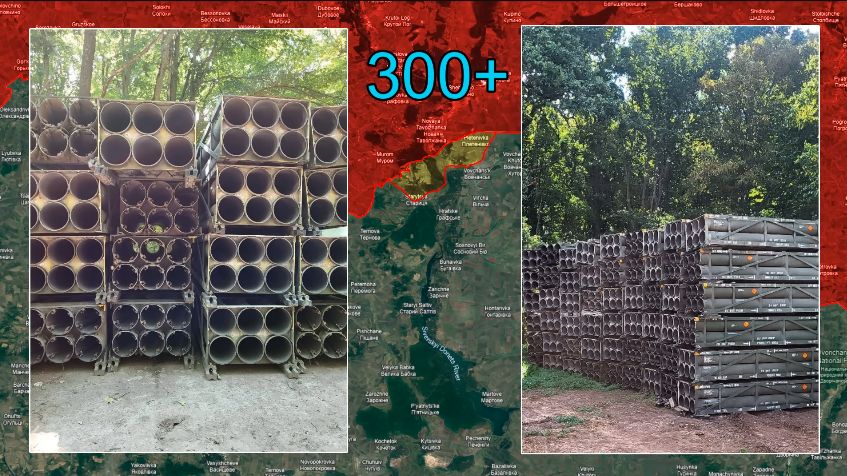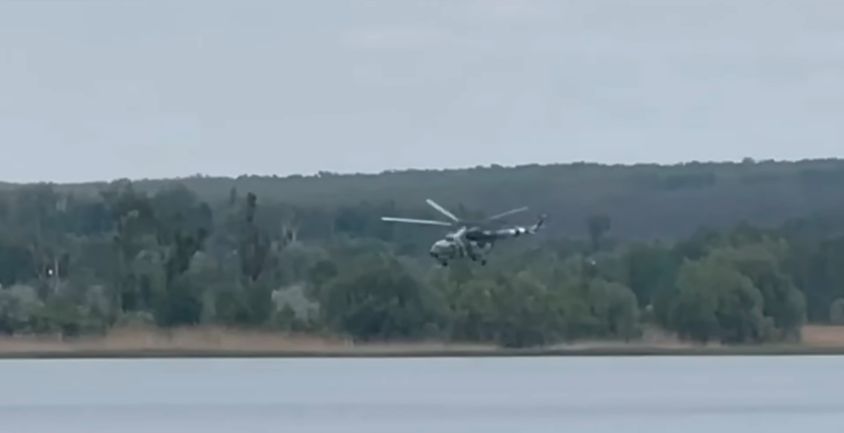Today there are a lot of updates from the Kharkiv direction.

Here, after Ukrainians had seized the initiative in all directions in the oblast, Russians decided to respond by resorting to their dominant tactic of sending waves of infantry groups using significant amounts of their reserves in a desperate attempt to preserve the initiative.
However, Ukrainians unleashed all available weapons, including HIMARS rockets that were just waiting for the green light from Western partners, particularly the United States.

Since the full-scale war began in February 2022, the American administration has prohibited Ukrainians from striking Russian territory with Western-made weapons. Consequently, Ukrainians had to watch as Russians prepared for another offensive against Kharkiv without being able to preemptively target enemy forces. This culminated in another Russian attempt to seize Kharkiv last month.
In response, Ukrainians intensified diplomatic efforts to gain permission to strike Belgorod, and to destroy Russian forces threatening the city of Kharkiv. The Ukrainian army matched their targets, including Russian bases, equipment, ammunition depots, and anti-aircraft systems in the Russian Belgorod region. Finally, President Joe Biden granted this request, albeit limited to the area near Kharkiv.
Ukrainians had already planned their next actions and were awaiting permission to start their wave of strikes. In order to open the airspace for the usage of HIMARS and other weapons, their first targets became Russian radars and air defense systems.

They managed to locate and destroy one of the most modern enemy surveillance radars, Kasta 2E2. The geolocated footage from the Belgorod Oblast shows how they are using one of their locally developed loitering munition systems, Rem 2. The first drone targets the truck carrying the antenna, and the second successfully destroys the command post vehicle.

This was immediately followed by a massive launch of HIMARS rockets, which can be seen in this video released by the Ukrainian forces.

Being blinded by the destruction of powerful radars, the Russians reported that various elements of anti-aircraft systems S-300 and S-400 were hit.
Soon the Russians shared images and videos that confirmed the damage to these vital weapons, which they are using not only defensively for interception of air threats, but also offensively for striking ground targets.
Ukrainian soldiers fighting on the front line reported that soon after those initial strikes, their armed forces began using fighter jets, helicopters and artillery more intensely than before.

A geolocated video from the Kharkiv Oblast shows Ukrainian helicopters returning after performing combat tasks in the vicinity of Vovchansk.
The next video shows the devastating work of Ukrainian jets against concentrations of enemy forces in the city. Once again, Ukrainians waited until Russians gathered in a large local building and then targeted it with gliding bombs to eliminate them.
It is important to note that this building was located very close to the Ukrainian positions in the high-rise building district of Vovchansk.
The Russians were attempting to gather a large force for a storm operation against the Ukrainian stronghold north of the Vovcha river, which has caused them problems for weeks and weeks. Russian forces that survived the attack were quick to capture the aftermath of this devastating
strike.

The magnitude of all these Ukrainian attacks prompted the Russian Ministry of Defense to claim that the Ukrainian command has transferred up to 12 M270 self-propelled multiple rocket launch systems to the Kharkiv oblast to support counteroffensive measures in this direction. This exact model can fire up to 12 rockets in comparison to the more common M142 launcher, which can fire up to 6 rockets.

Even though there is no precise information on exactly how many systems the Ukrainians have received from their partners, they were quick to add fuel to the fire of speculations by publishing images of dozens of empty HIMARS rocket tubes with the additional hint that those were used just within the last day or two against targets in the Belgorod region.
Military analysts calculated that according to the published footage, more than 300 rockets were fired by the Ukrainian forces, underlining once again how influential the American aid for the country has become in the last month.

Overall, while Russians tried to limit the Ukrainian counteroffensive in the Kharkiv direction by flooding the battlefield with personnel, the long-awaited approval from the United States that Ukrainian commanders finally received changed everything.
Ukrainian forces were finally allowed to target key enemy military assets across the border and didn’t hesitate to demonstrate the benefits of this decision and the steady flow of Western military aid.

The Ukrainian Air Force destroyed Russian radars and air defense systems, and unleashed aviation to target enemy forces’ build-up points on the front, while Russian forces struggled to deal with strikes for which they did not account. This helped to not only make Russian offensive actions in the region more difficult, but also to create even better conditions for the Ukrainian counteraction to push the enemy behind the border more effectively.








